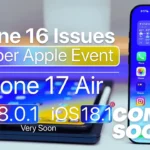Here’s the full version of the answer on why a mouse may flicker or disappear when not moving:
If your mouse keeps flickering or disappearing whenever you don’t move it, it can be quite frustrating. There are a few possible reasons for this issue, such as outdated drivers, a faulty cable, or a software issue.
One common cause of mouse flickering or disappearing is outdated drivers. To fix this, you can update your mouse drivers by going to the manufacturer’s website and downloading the latest drivers for your mouse model. You can also use the Device Manager on your computer to check for driver updates.
Another possible cause of mouse flickering or disappearing is a faulty cable. If your mouse cable is damaged or frayed, it can cause connectivity issues and lead to flickering or disappearing of the cursor. In this case, you may need to replace your mouse or try using a different cable to see if it fixes the issue.
Finally, a software issue can also cause mouse flickering or disappearing. One possible solution is to try restarting your computer or running a malware scan to check for any potential infections. You can also try adjusting your mouse settings, such as increasing the cursor size or changing the pointer style.
If you are experiencing mouse flickering and disappearing issues on your computer, here are some tips and step-by-step solutions that may help:
Restart your computer: Sometimes, a simple restart can fix the issue. Try restarting your computer and check if the problem persists.
Update drivers: Mouse flickering and disappearing issues can be caused by outdated or corrupted drivers. Update your mouse drivers to the latest version available from the manufacturer’s website.
Disable hardware acceleration: Hardware acceleration can sometimes cause issues with the mouse cursor. To disable hardware acceleration, go to the Display settings in your Control Panel, click on the Advanced settings, and then select Troubleshoot. From there, you can disable hardware acceleration.
Change mouse settings: Sometimes, changing mouse settings can fix the issue. Go to the Mouse settings in your Control Panel and try adjusting the pointer speed or changing the pointer scheme.
Check for malware: Malware or viruses can also cause issues with your mouse cursor. Run a full scan of your computer using your preferred antivirus software.
Check the mouse cable and port: Check the mouse cable and port to ensure that they are properly connected. If the mouse is connected through a USB port, try plugging it into a different port.
Use a different mouse: If the issue persists, try using a different mouse to see if the problem is with the mouse or your computer.
If none of these solutions work, it may be a hardware issue with your computer or mouse. In that case, you may need to contact technical support or a computer repair technician for assistance.








